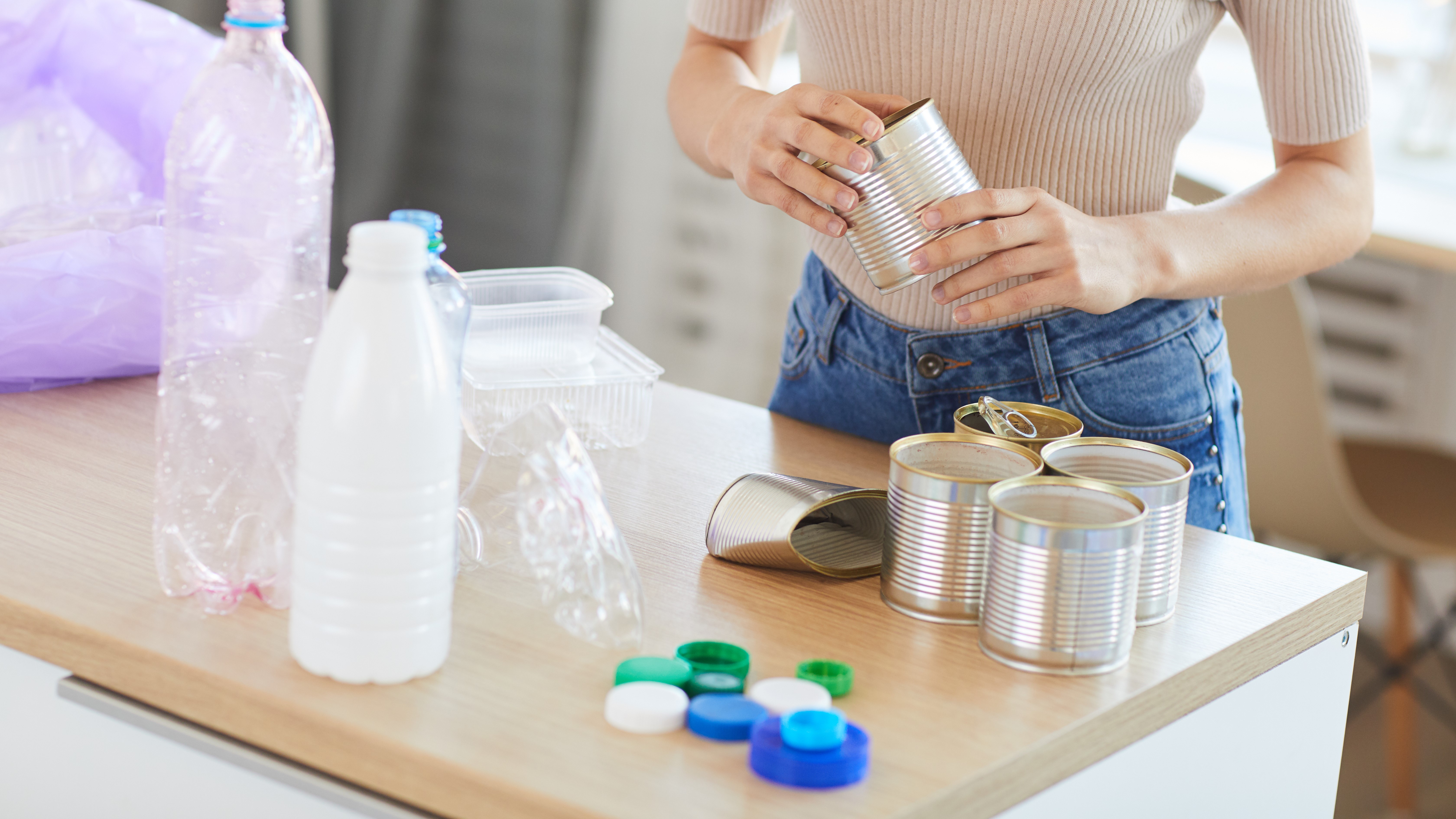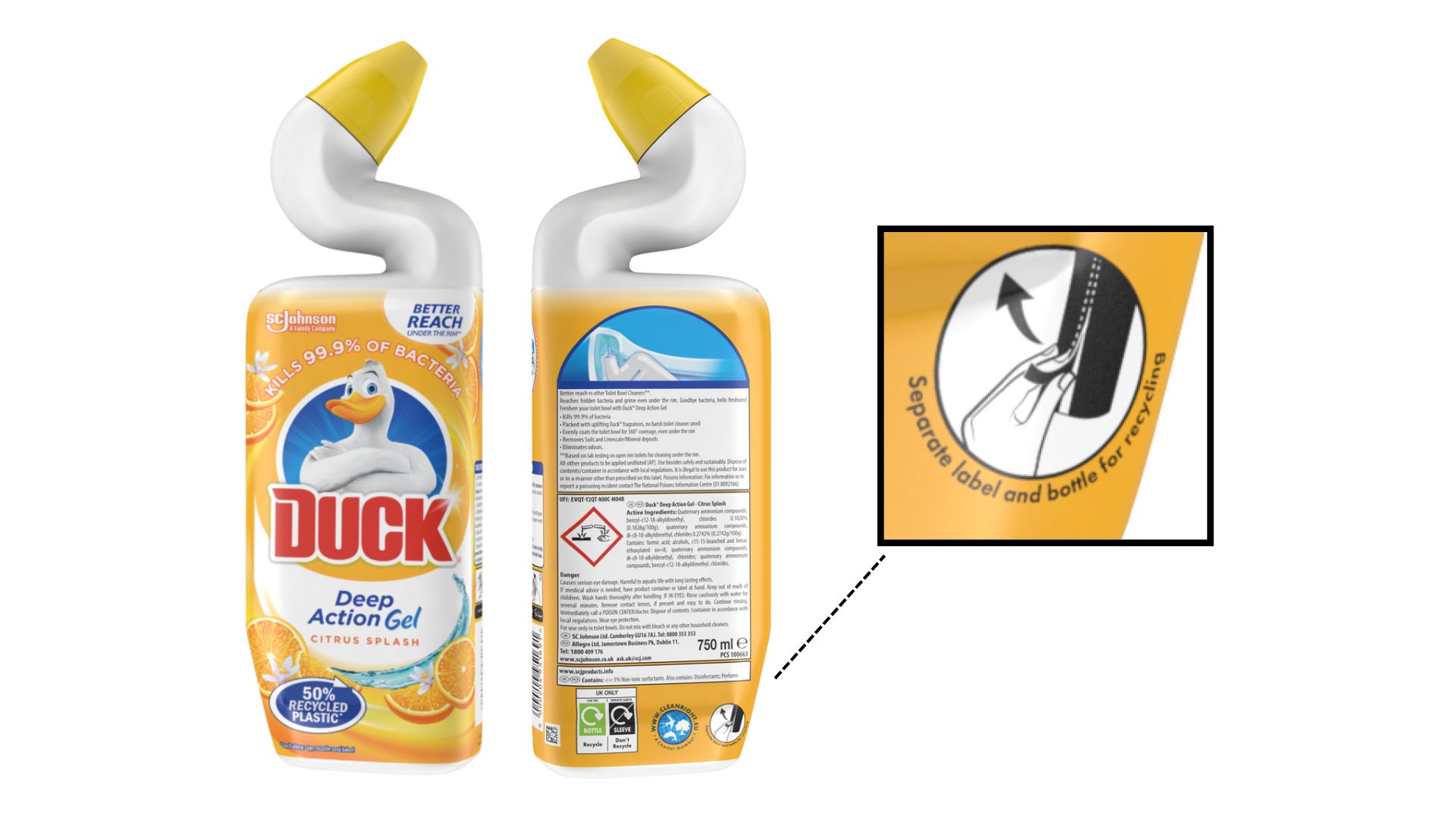Peel. Tear. Soak. Scrub. Grrrrrr. The challenge of labels and recycling
We all know the frustration of trying to remove a label so a package gets recycled. You try your best, but labels tear or won’t come off, and then you’re never sure if you should just trash the package or put it in the recycling bin and hope for the best.
Why do the labels matter anyway?
The goal of recycling plastic is that it can be used for new items. This is often referred to as a “circular economy” – plastic keeps being reused again and again so it doesn’t end up in landfills.
But a successful circular economy depends on easily recyclable items and strong demand for the resulting recycled plastic.
That’s where labels can be a challenge. The quality, color and reusability of the recycled plastic depends on making sure as many contaminants as possible are eliminated during recycling.

Aren’t labels just removed in the recycling process?
When your bin of recycling gets to a materials recovery facility, the plastic packages are typically sorted, cleaned, shredded, filtered to remove impurities, and then transformed into pellets that can be used to manufacture new plastic products.
But that’s not as easy when there are labels in the mix. Paper labels glued on with sticky adhesive can contaminate the plastic if they aren’t fully burned away during the recycling process.
Plastic labels made from a different material than the package can mingle with the package and contaminate the recycling. Even if the label and package are the same material, colors from the label can mix with the package material.
A little contamination is generally expected. But when there’s a lot of contamination, it affects the quality, color and value of the recycled pellets.
What are the solutions?
Companies are exploring ways to minimize label-related contamination during recycling, including using better adhesives, unifying package and label materials, and using innovations like perforated wraps that are easily removed.
But until companies everywhere can make sure the labels on their packages don’t cause recycling issues, it’s a good idea to keep considering labels as you recycle.

Here are easy steps you can take…
- Check with your local recycler for their recommendations. There are many different recycling processes and types of equipment. By knowing your local guidelines, you make sure your recyclables work in their system.
- If your recycler suggests removing labels, do it! Often the easiest way is to soak packages in warm water to help the label peel off more easily.
- Better yet, choose products that have perforated sleeves or other labeling that’s easier to remove before recycling. Tell your favorite brands that you want easily removable labels.
- Always rinse out any food or liquids from containers before you put them in your recycling bin, to further reduce contamination during the recycling process.